The Glutes
The glutes comprise of three muscles – Gluteus maximus, Gluteus medius and Gluteus minimus. Each glute muscle moves your thigh in a different direction. Working together, they affect your ability to stand, walk, stand from a squatted position, climb stairs and walk uphill. They also contribute to helping maintain your balance. So, regardless of their name, each glute muscle is just as important as one another.
The Gluteus Maximus
The gluteus maximus muscle lies closest to the surface and is the biggest of the three muscles. The gluteus maximus helps to maintain balance as you walk and run. As your leg comes forward and your heel hits the ground, this muscle tightens to slow down the forward movement of your leg and keep you balanced. When you run, this muscle tightens on the leg you are standing on to control the forward momentum of your trunk.
The Gluteus Medius
The gluteus medius lies underneath and slightly higher than the maximus. As you lift your leg to take a step, the medius tightens on the stationary side to prevent your pelvis from dropping down when you pick your foot up. Weakness in this muscle causes an abnormal walking pattern called the Trendelenburg gait. When this occurs, the upper body leans over the leg you are standing on to shift your centre of gravity over that leg to keep you balanced. Gluteus medius weakness also shortens the length of your steps, making your walking strides less efficient.
The Gluteus Mimius
The gluteus minimus lies underneath the medius, and as its name implies, the gluteus minimus is the smallest of your gluteal muscles. Depending on which part of the muscle is active, it can move your thigh forward, move it out to the side or rotate it inward or outward. Your hip is a ball-and-socket joint formed by your pelvis and thigh bone, and the gluteus minimus helps keep the ball in the socket as you move.
Signs of Weak Glutes
Knee pain – if you experience any significant form of chronic or acute knee pain and discomfort, it could mean that your glutes, as well as your hamstrings aren’t functioning correctly. Maintaining an appropriate balance of strength between the anterior and posterior portions of the thigh and knee is important for ensuring joint health and correct movement mechanics.
Faulty mechanics – Look at your squat, hinge and lunge mechanics. If there’s significant anterior knee shift (knees coming forwards), valgus knee collapse (knees collapsing inwards), and lack of hip hinge mechanics, it could mean that the glutes aren’t activating correctly, making them weak and dysfunctional.
Tight hip flexors – If your hip flexors feel constantly tight, it may mean that your hamstrings and glutes are weak and inactive. Creating muscular balance between the anterior and posterior segments of the hip is critical not only for posture, but also for performance and joint health.
Weak ankles and feet – Do you pronate your feet (roll them inwards) or feel that you have weak feet and ankles in general? This may be a sign that your glutes are weak and disengaged. Lack of balance and stability also correlate with poor glute strength and hip function. If you find that your knees collapse inwards during squats or if your feet roll inwards, this can also indicate weakness in the glute medius and minimus.
How to strengthen your glutes?
Here’s a few exercises that you can try to help strengthen your glutes:
Donkey Kicks
Get on the ground on all fours with your hands and knees shoulder-width apart. Lift your right knee off the ground as you kick your foot upward so your thigh is in line with your back and the bottom of your foot is facing skyward. You should feel your core, especially your glutes, engaging during this motion. Bring your leg back down, repeat and switch legs.
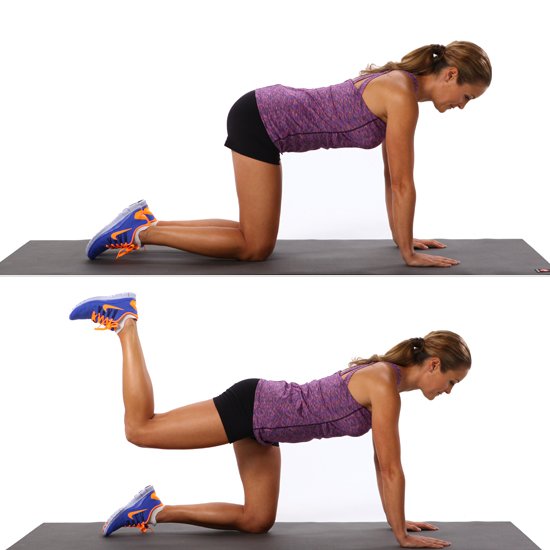
Glute bridges
Lie on your back on the ground with your arms at your sides, knees bent and feet flat on the floor. Lift your backside off the ground until you form a straight line from your shoulders to your knees. Push your heels into the ground, and feel your glutes stabilizing your body. Hold for two-seconds, lower your body back down and repeat.
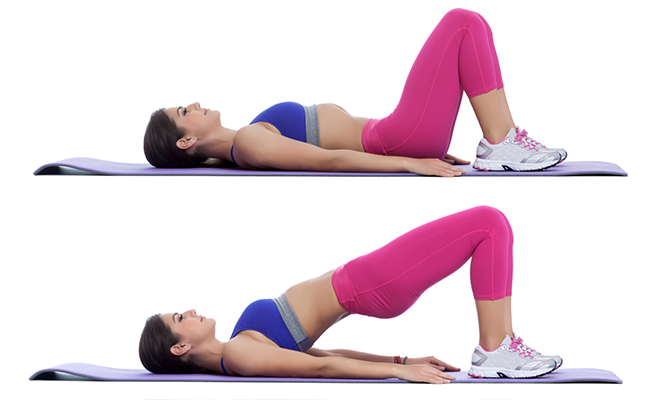
Side leg lifts
Lie on your right side with your legs straight and stacked on top of each other. You can rest your head-on top of your right arm, and put your left hand on your hip or on the ground to help balance your body. Lift the top leg straight up as far as is comfortable, then lower back down. Repeat and switch sides.
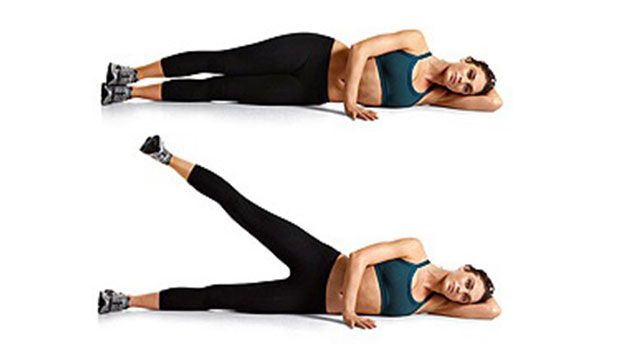
Body weight squats
Stand with your arms extended in front of your body and your feet a little wider than shoulder width with your toes angled somewhat outward. Lower your backside down toward the ground as if you were going to sit. Lower until your quads are parallel with the ground, then stand back up and repeat.
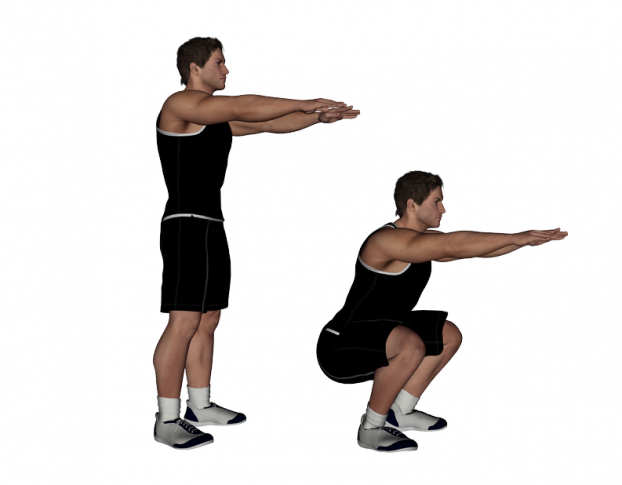
Clams
Lie on your right side with your knees bent on top of each other and your right arm under your head to support it. Keeping your feet together, open the clam by lifting your top knee up. While your hips will rotate during this exercise, your pelvis and core should remain stable. Close the clams, repeat and switch sides.
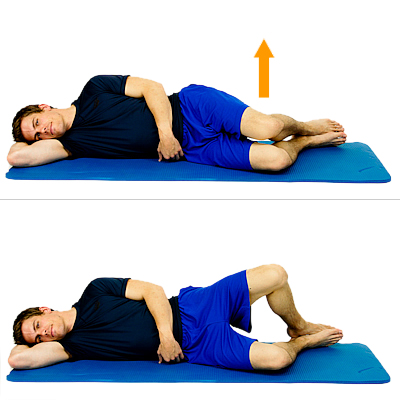
Single leg squats
Stand with your arms extended in front of your body and your feet a little wider than shoulder width. Pick your right foot up off the ground, and extend that leg straight out in front of your body. Squat down as far as you can while balancing on the left leg, keeping that knee and foot aligned. Bring your body back up, repeat and switch legs.
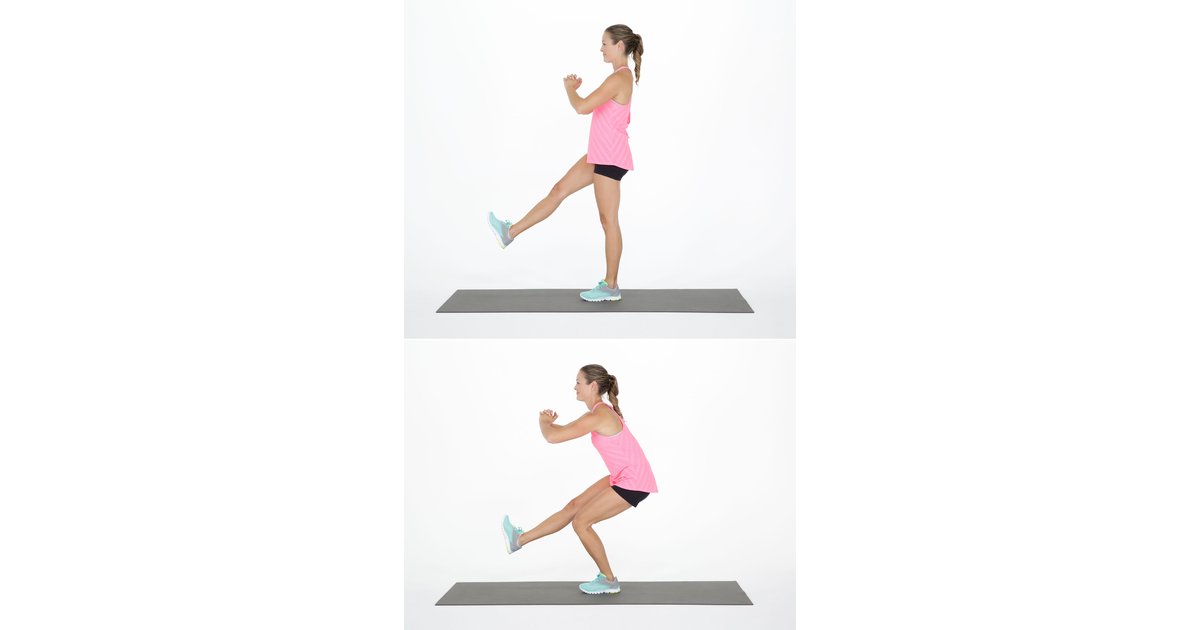
These are just an example of some of the exercises that are used to strengthen the glute muscles, however not every exercise works for everybody. A correct technique must be used to allow for optimal strength.
Here at Comfort Health
If you need any help or guidance with your glute weakness or any of the exercises please don’t hesitate to contact us at Comfort Health.